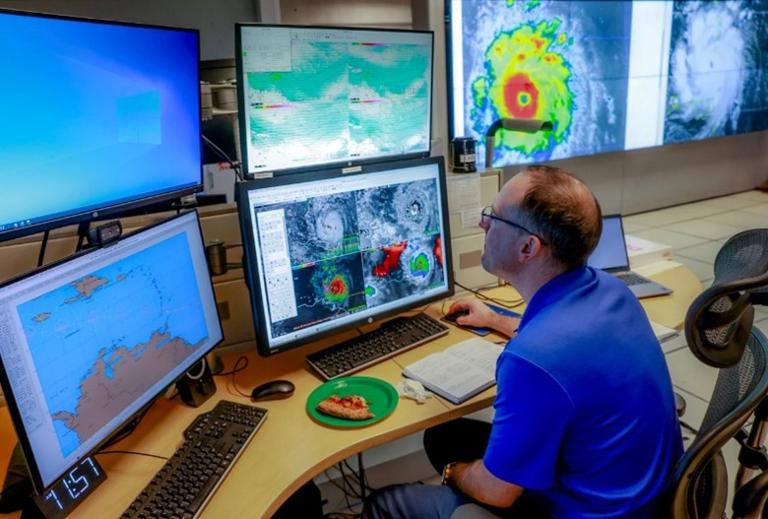Artificial intelligence can help to reduce the impacts of natural hazards, but robust international standards are needed to ensure best practice. Early-warning systems can drastically reduce the impacts of natural hazards. Informing people that a storm or flood is imminent can give individuals and governments precious time to prepare and alleviate the worst damage.

The United Nations Early Warnings for All Initiative calls for every person on Earth to be protected by early-warning systems by the end of 2027. Yet, as of 2023, only 52% of nations had access to such measures1. Least-developed countries and small island states had even less access (46% and 39%, respectively), despite disproportionately experiencing the consequences.
As part of a global effort to hit this target, researchers, the private sector and governments are increasingly turning to artificial intelligence (AI) technologies. They hope that it will make early warnings more efficient, accurate, timely and user-friendly, and help to plug geographical gaps.
The increasing use of AI systems in the disaster-management domain brings promise but also risks. For example, because there tend to be more ground radar systems in wealthier regions, there can be biases in the data sets that AI algorithms are trained on to predict precipitation patterns. Such biases can put poorer regions at a disadvantage.
To address these risks, specialists and stakeholders must come together to provide standards — internationally agreed best practices — to govern AI-infused disaster-management tools. These standards should address everything from how data are collected and handled, to how algorithms are trained, tested and used.
Such standards can foster responsible and trustworthy AI, improve the scalability and interoperability of AI-based tools and clarify who is liable if an AI model does not perform as promised — issuing false alarms, for example, or failing to recommend an evacuation when one is needed.
There are many examples of how AI is enhancing the effectiveness of early warning: by forecasting and monitoring natural hazards, assessing the robustness of infrastructure and disseminating warnings.
Various companies released AI-based medium-range weather-forecasting models in 2023, including Google DeepMind in London, Huawei in Shenzhen, China, and Nvidia in Santa Clara, California. In terms of speed and precision, some of these models outperform conventional tools. Furthermore, AI is considered well suited to improving forecasting and monitoring of small-scale events, such as thunderstorms, which can include extreme rainfall or damaging hail and give rise to tornadoes.
The extent of floods can be confirmed by combining satellite imagery with AI analyses. For instance, NASA’s weather-related hazard information from synthetic aperture radar (HydroSAR) system, which includes a flood-monitoring service for the Hindu Kush Himalaya region, is also implementing AI to improve flood monitoring4.
All of this work shows the promise of AI for disaster-warning systems. However, AI tools created in the absence of international standards could have a variety of problems, including data bias and not being compatible or interoperable with each other. Because disasters can move across borders, this is a lost opportunity for continuous early-warning coverage.
In 2022, our focus group published a road map6 of existing standards covering digital technologies and disaster risk-reduction measures. We found 42 publicly available standards that address these topics, but only 4 mentioned AI.
When laying the groundwork for standards, it is important that stakeholders from different regions contribute to the discussion. Each country has distinct values and priorities, and the standards will need to be used across borders. Participation might also encourage stakeholders to incorporate such standards into their own national legislation.
Another important aspect of standards is to support interoperability and scalability — helping to ensure that AI-based warning systems work well together and can be expanded to regions that need them, when possible, without inappropriately applying a system developed for one region to another area, where it might not work well. FBut AI is not all-powerful and might not work well in regions where there are few observational networks or where no robust communications infrastructure exists.
Such efforts should help to ensure that AI-based early-warning systems are ethical and justly deployed. We run a risk of certain countries and regions benefiting from AI-based systems, while others are left behind. Standards are the solution, we must not wait.
Sources:
Nature
https://www.nature.com/articles/d41586-024-03149-z .
Provided by the IKCEST Disaster Risk Reduction Knowledge Service System
Comment list ( 0 )
